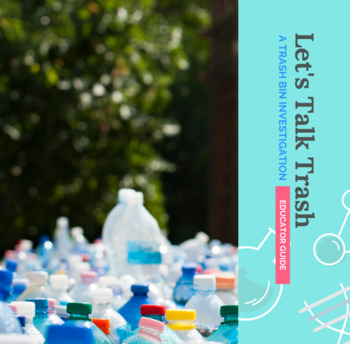Let's Talk Trash Anchor Phenomenon - Human Impacts, Ecosystems, Nutrient Cycles
- PDF
Description
A Trash Problem Puzzle
In the first task of this investigation, students will explore the idea that we have a “trash problem” and that it has increasingly become a concern. It is a problem that is getting worse over time. In the first activity, students will examine headlines for first exposure into some of the ideas they will be uncovering in this unit. Links to additional videos and photographs that can be shared with students to help them visualize the problem are also included in the Daily Lesson Guide.
Then, they will take a look at real-world data -- information collected and disseminated by the United States Environmental Protection Agency -- to quantify the trash problem into something they can begin to understand. By converting the total amount of waste generated in the United States to waste generated per person, students will begin to understand the magnitude of the problem. They will use this data to make observations and craft questions about the causes and effects of this problem, their role in it, the waste’s “journey” after it leaves them, and some solutions.
These questions (and those developed through the other Anchor Experiences) will guide students into the science content ideas targeted in this Spark investigation.
**This FREE resource includes the Educator's Guide, Storyline Pathways, and Lesson 1 (A Trash Problem Puzzle).
Educator Notes:
Through the anchor experience, your students will generate questions. Your job as the educator is to take the questions they generate and turn them into learning pathways. We can do this by grouping together questions that relate to the same topics, micro-phenomena, and core science ideas. In this section, you will find some potential pathways your students could investigate. You will see from the graphic that these pathways are not mutually exclusive -- there is significant overlap, as there should be. After all, as John Muir once wrote, "When we try to pick out anything by itself, we find it hitched to everything else in the Universe."
While the anchor experience was designed to guide students toward the focus Disciplinary Core Ideas and Performance Expectations, you will see additional questions present on the described pathways as well. It’s up to you and your students which questions you pursue.
Terms Of Use:
Copyright © 2021 iExploreScience LLC. All pages of this product are copyrighted, and all rights are reserved by the author. You may not create anything to sell or share based on this packet. The product is created for the use of ONE teacher. Please do not share with colleagues. If they like the product, please send them to my TpT store. I appreciate your support with this request! You are permitted to share ONLY the cover image of this product on your blog or via social media as long as you link back to my product on TpT. Failure to comply is a copyright infringement and a violation of the Digital Millennium Copyright Act (DMCA). Clipart and elements found in this PDF are copyrighted and cannot be extracted and used outside of this file without permission or license. Intended for classroom and personal use ONLY.





